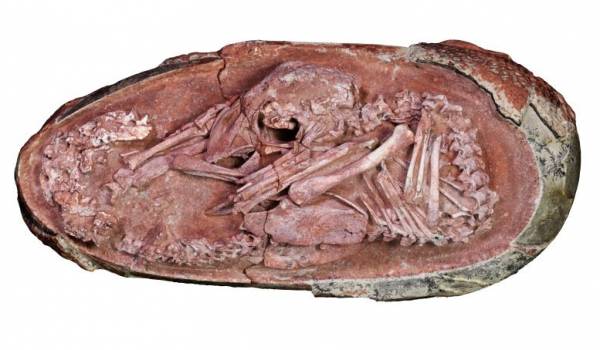
Researchers have discovered and studied in detail a 72 to 66 million-year-old dinosaur embryo, surprisingly well preserved inside a fossilized egg.
According to experts from China, the UK and In Canada, this finding sheds light on the relationship between the behavior of modern birds and dinosaurs.
The embryo, dubbed Baby Yingliang, was discovered in Late Cretaceous rocks in Ganzhou in southern China and belongs to a toothless theropod dinosaur oviraptorosaurus. It has grown to 27 centimeters, the oblong egg itself has a length of about 17 centimeters. A randomly acquired copy was stored in The Museum of the History of the Nature of the Inlian stone and caught the eye of researchers only recently.
Oviraptorosaurs were feathered theropod dinosaurs closely related to modern birds. They lived in Asia and North America during the Cretaceous period.
Inside the egg, the oviraptorosaur is positioned as modern chicks do. Previously, scientists have not observed such poses in dinosaur embryos.
The pose of the bird embryo is controlled by its central nervous system and helps the chick to hatch successfully. Now scientists believe that it could have developed even among non-avian theropods.
“This dinosaur embryo inside an egg is one of the most beautiful fossils I’ve ever seen. This small non-hatched dinosaur looks like a nestling curled up in an egg, which is another evidence that many features characteristic of modern birds first appeared in their dinosaur ancestors,” commented Professor Steve Brusatte from University of Edinburgh, one of the authors of the study.
New Year’s sale: discounts up to – 60%
Anna Lysenko
Even more interesting things about animals